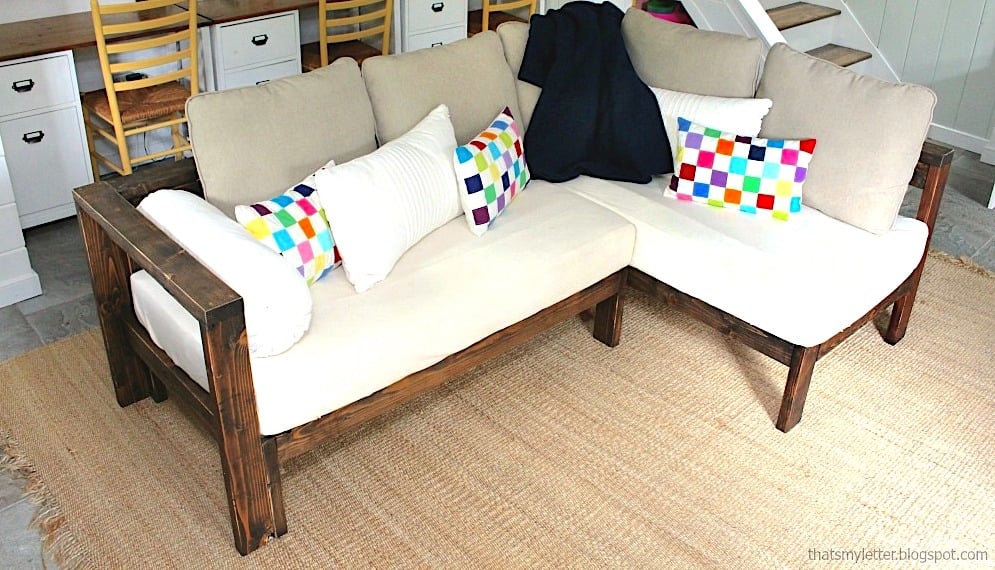
Easy DIY sectional or sofa made with 2x4s and crib mattresses. Very inexpensive and easy to make, full free tutorial by Ana-White.com
Dimensions
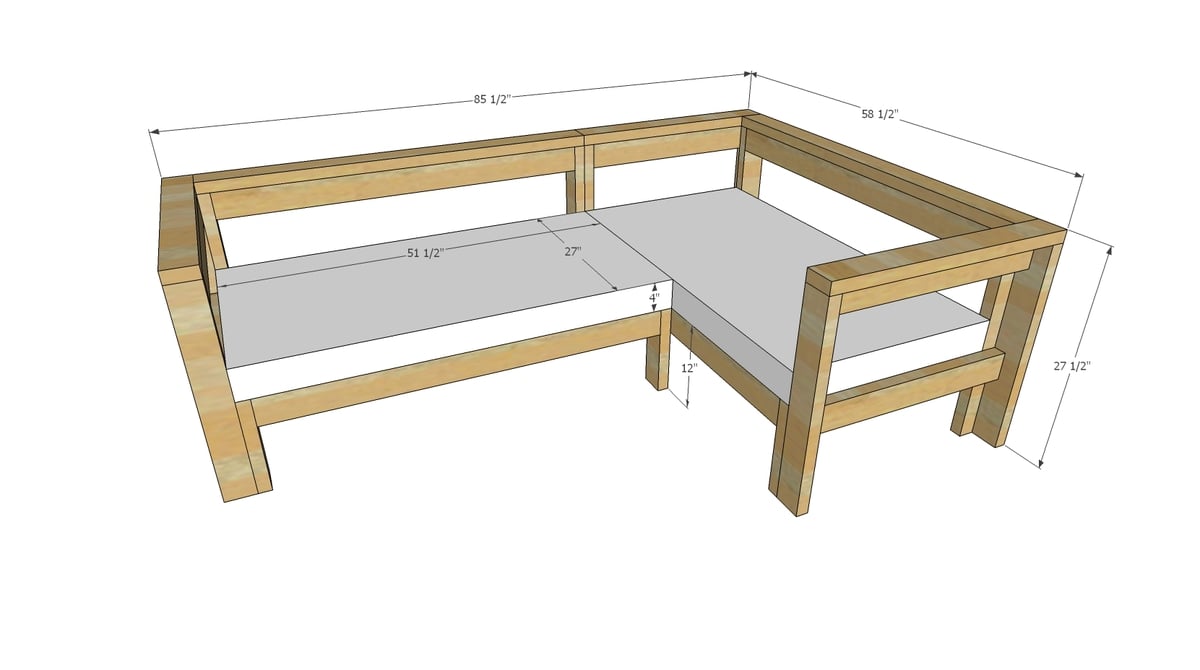
Dimensions shown above
Preparation
Shopping List
FOR 1 KIDS COUCH
6 – 2x4 @ 104 -5/8” (9’ studs)
FOR 1 ARM FOR KIDS COUCH
1 – 2x4 @ 12 feet long
2-1/2” self tapping screws
Common Materials
Cut List
FOR 1 SOFA
2 – 2x4 @ 26” – back legs
2 – 2x4 @ 23-1/2” – side apron
2 – 2x4 @ 12” – front legs
3 – 2x4 @ 48-1/2” – front/back
1 – 2x4 @ 51-1/2” – top
10 – 2x4 @ 25-1/2” - slats
FOR 1 ARM
2 – 2x4 @ 26” – legs
2 – 2x4 @ 27-1/2” – sides
1 – 2x4 @ 30-1/2” - top


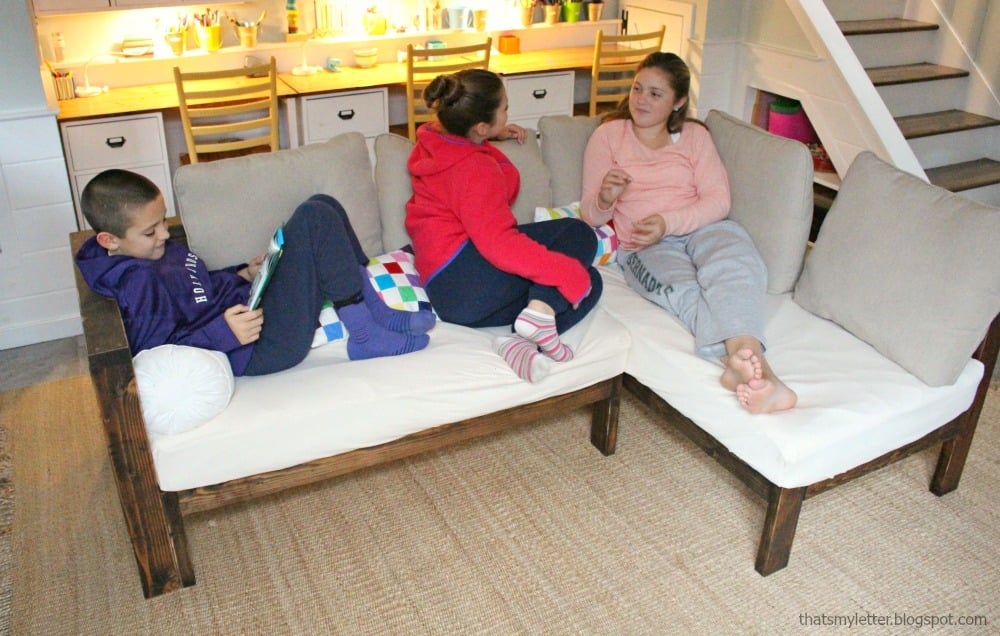
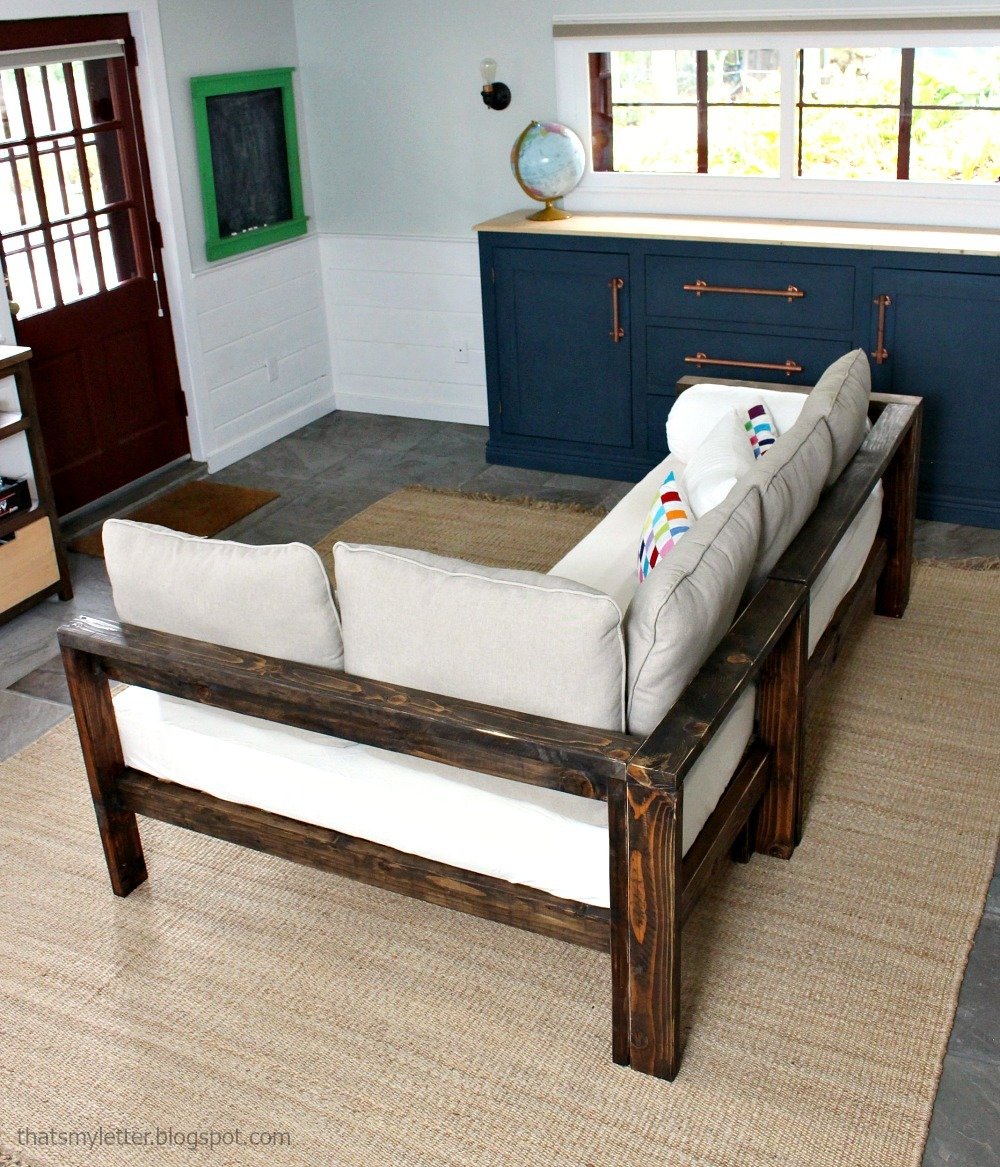
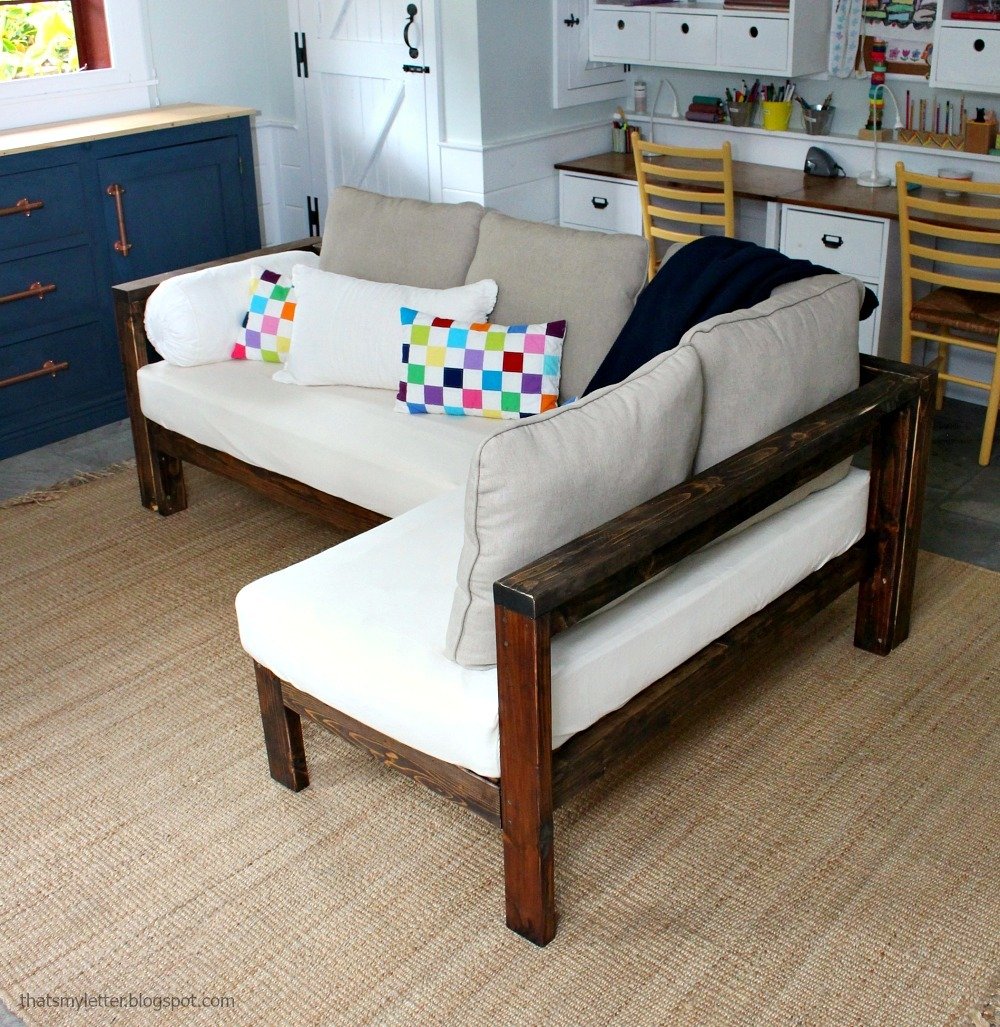
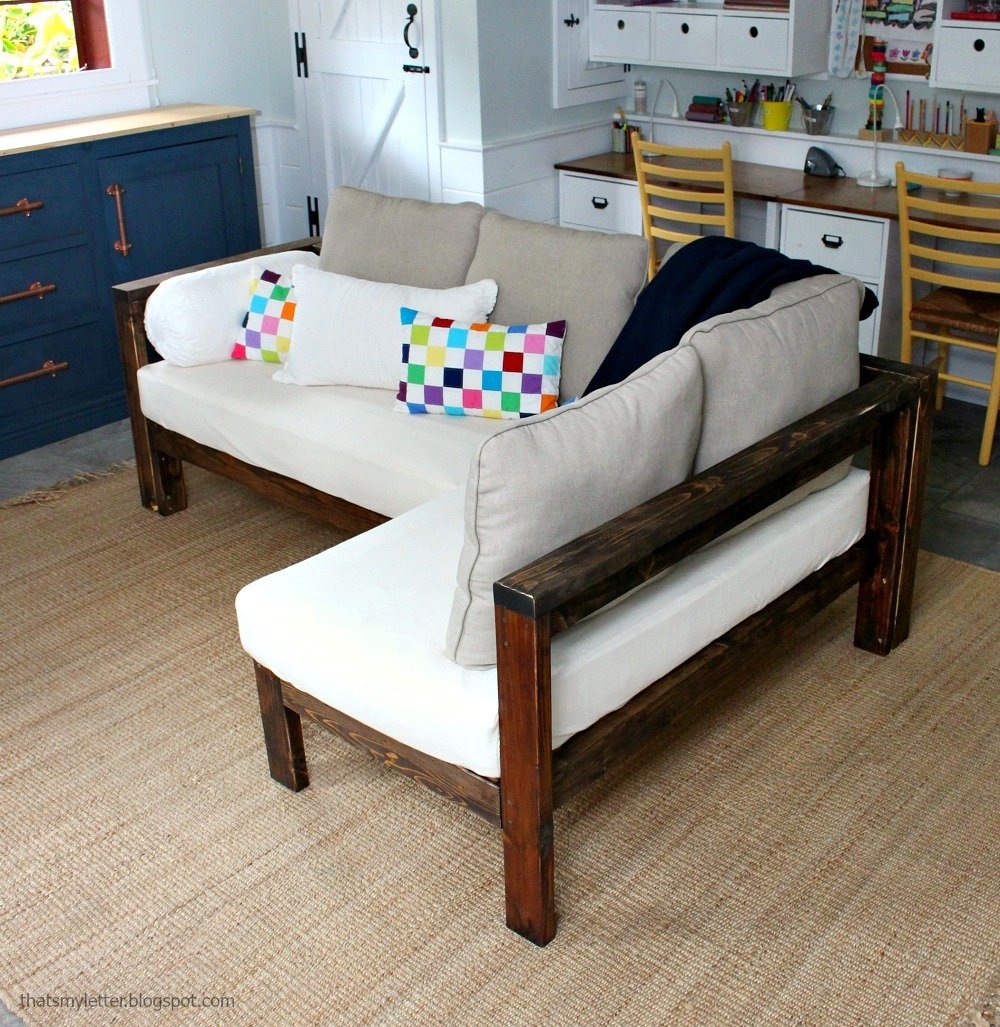
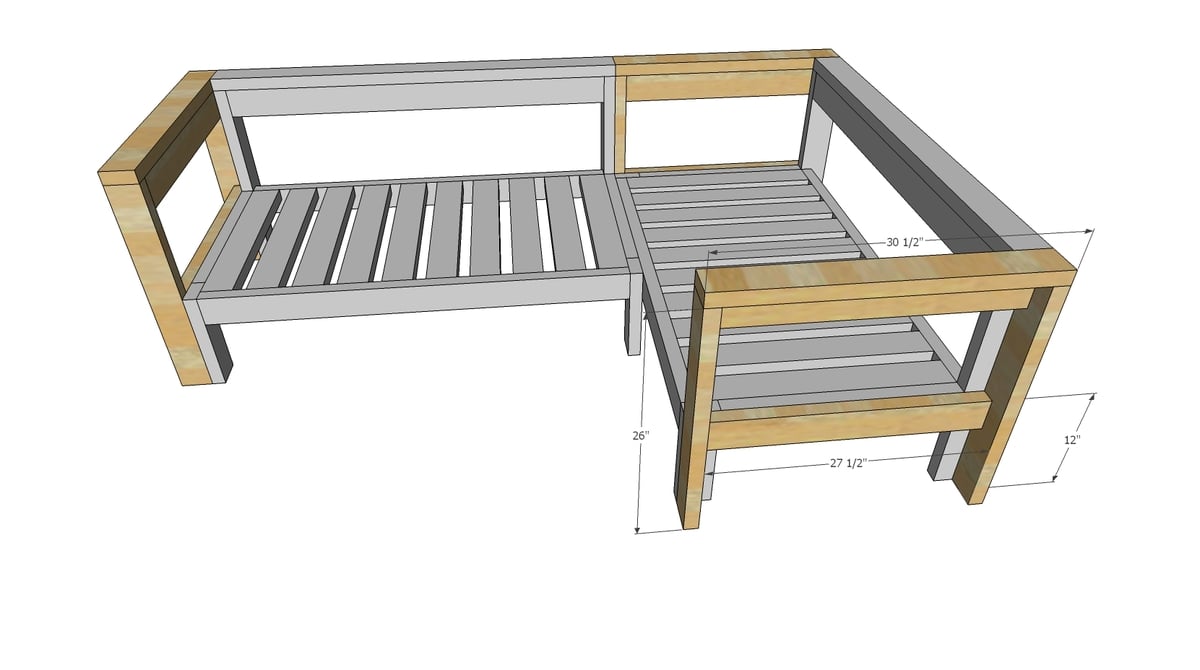
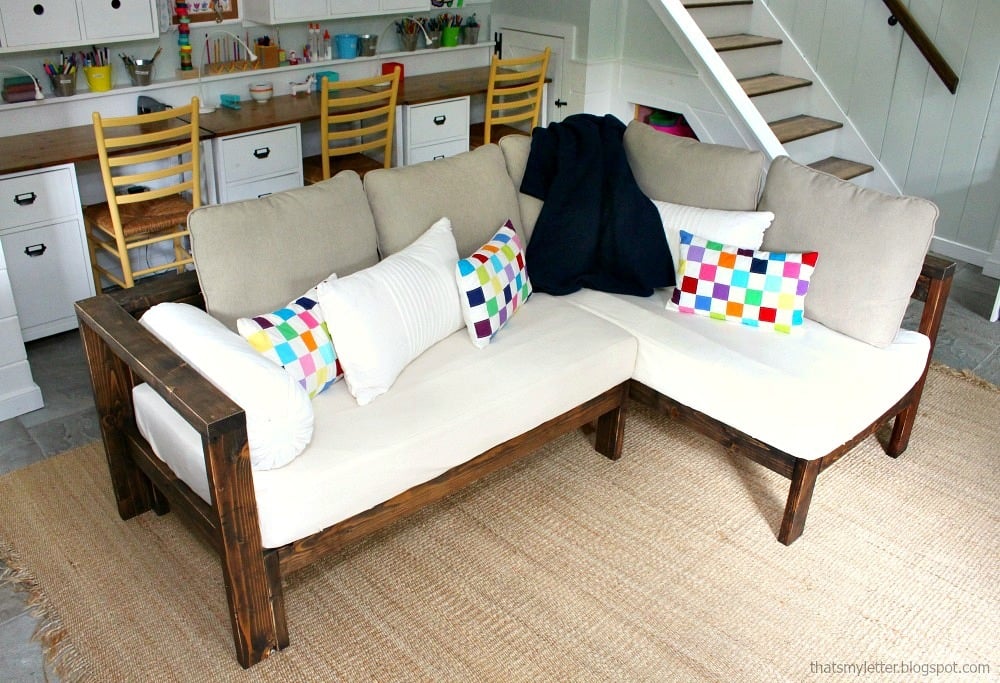











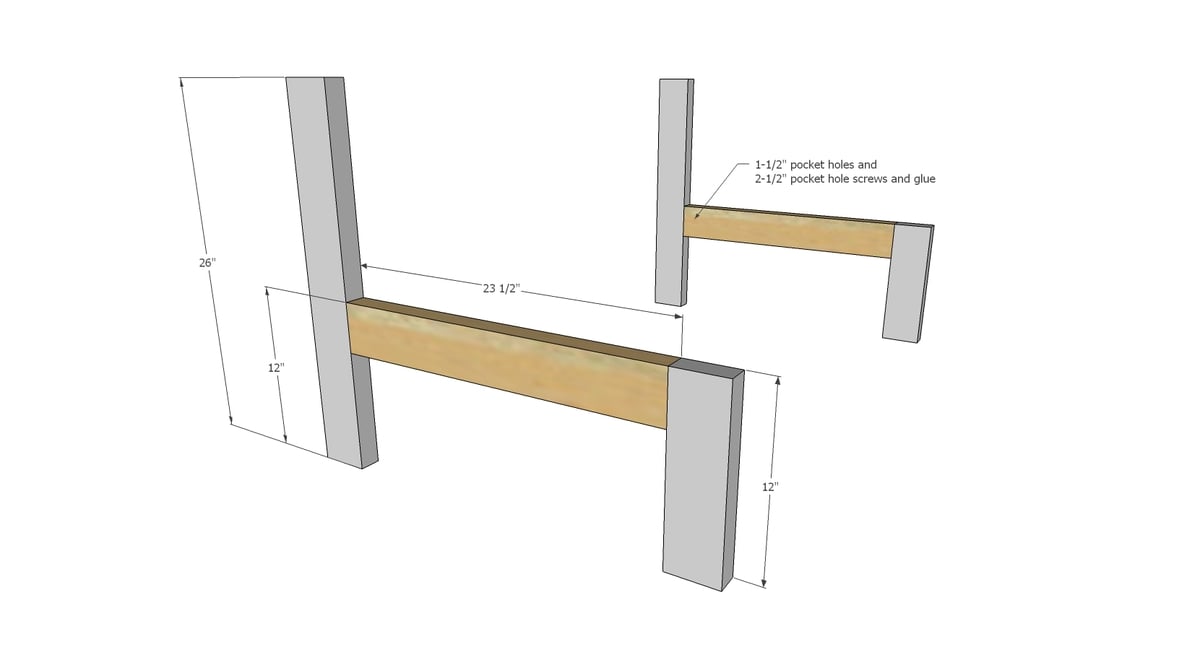

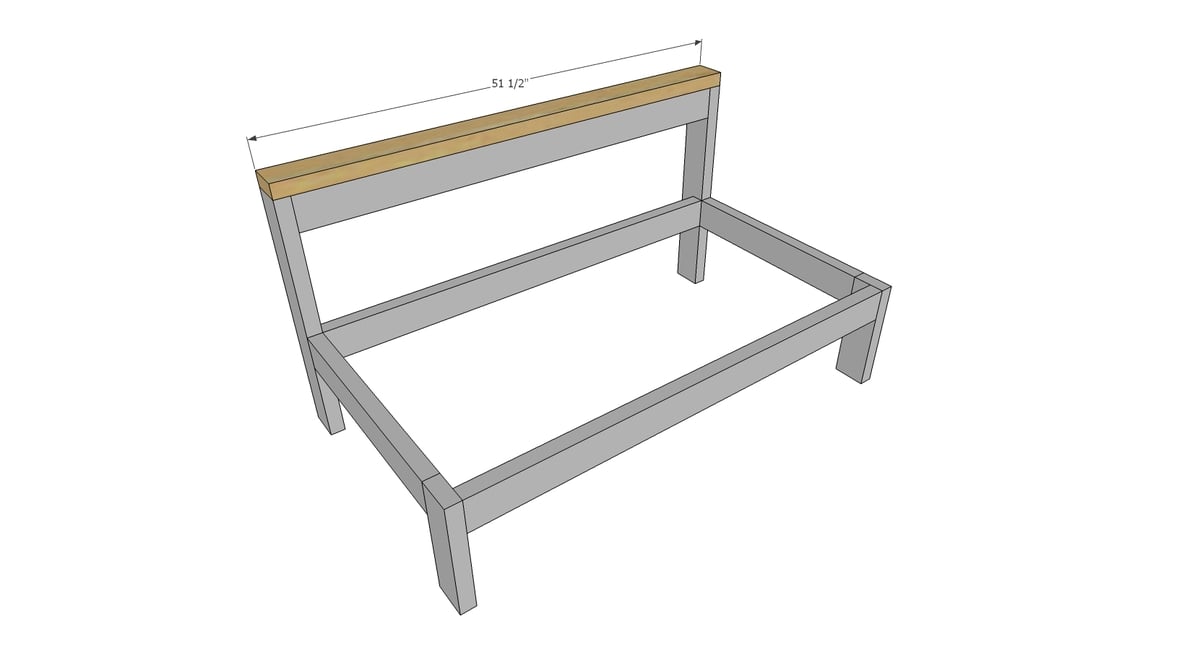
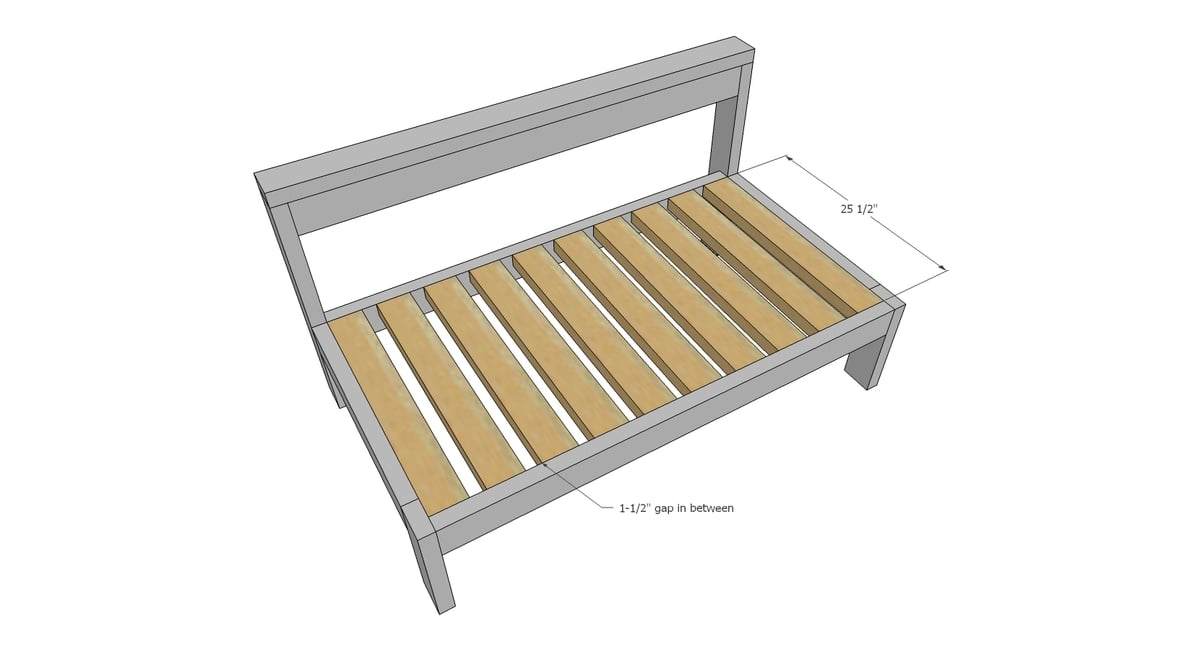
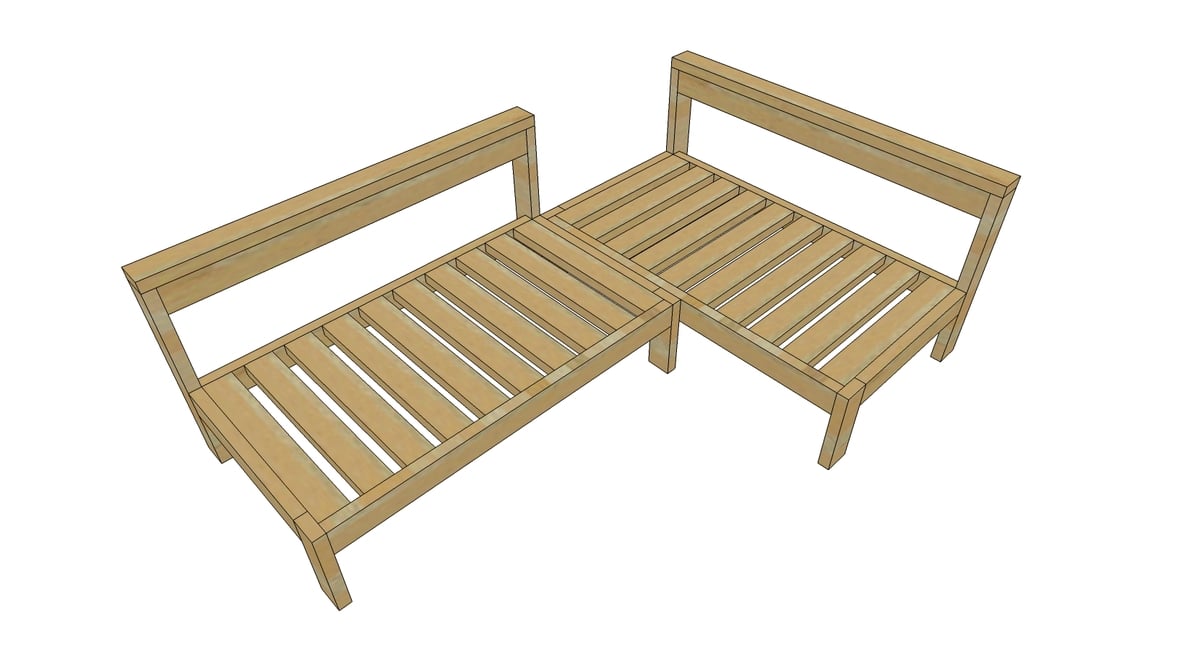
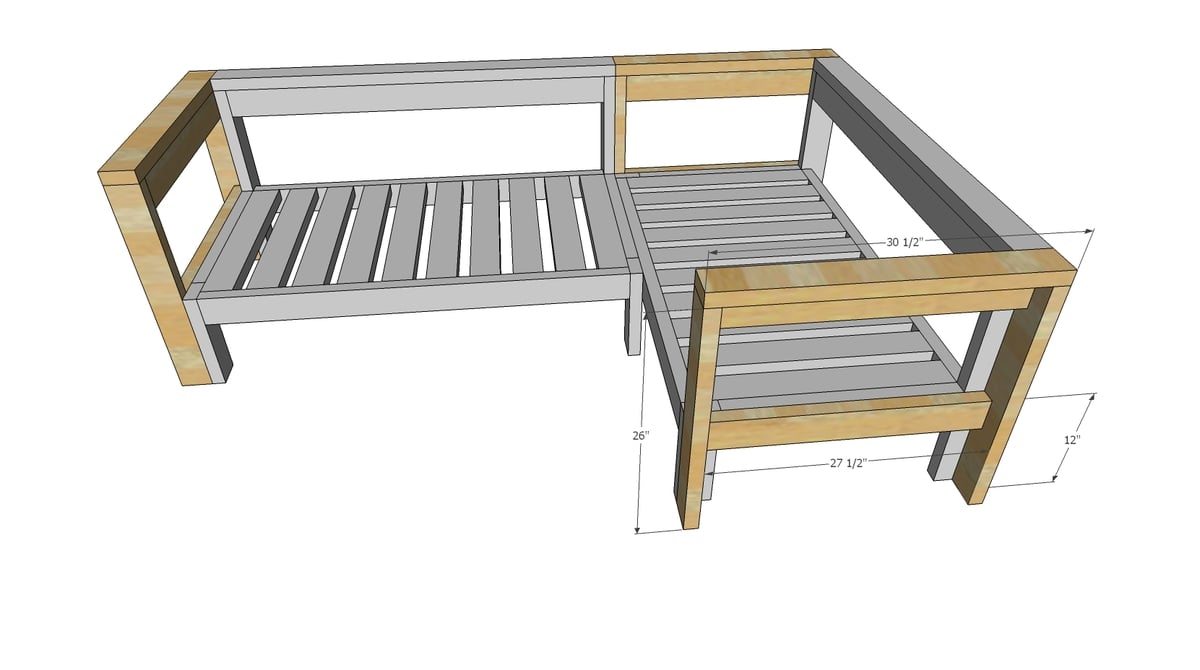
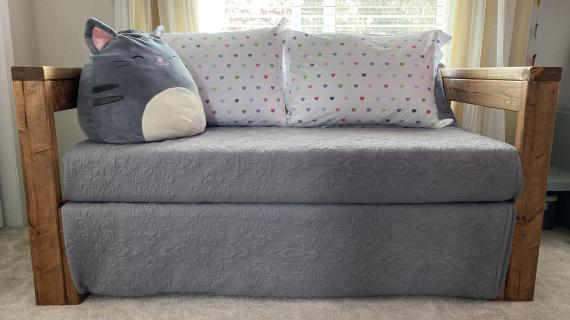
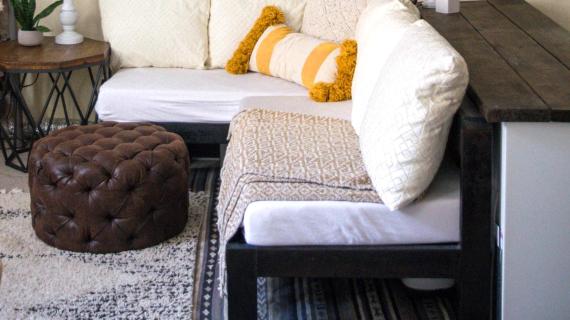
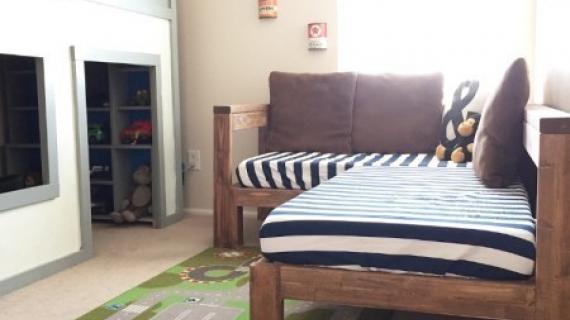
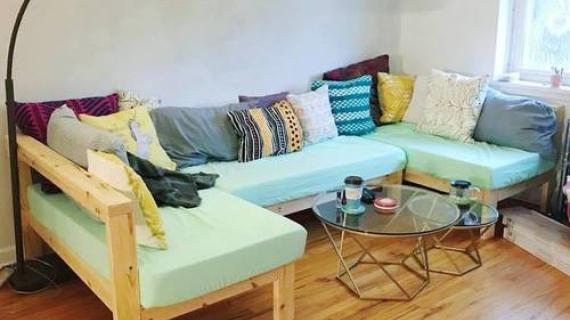
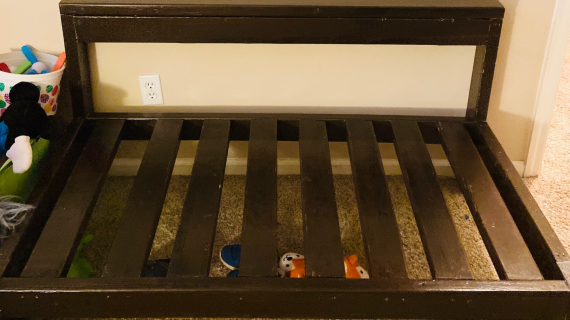
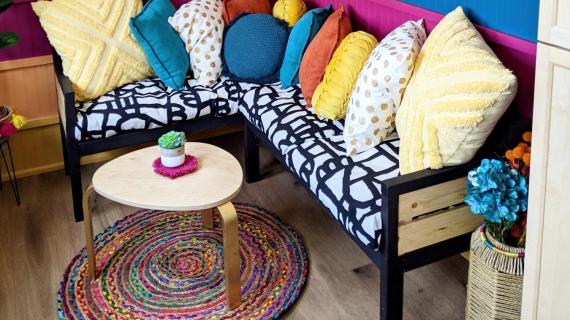

Comments
TeamDean
Mon, 04/27/2020 - 06:06
Has anyone made this using…
Has anyone made this using twin mattresses? If so, do you happen to have the wood cuts/supply list saved? Thanks for any insight.
Tone65
Sat, 08/07/2021 - 01:59
I need the same. I will give…
I need the same. I will give it a shot without graphics and get back to you, hopefully it will be sufficient.
Tone65
Sat, 08/07/2021 - 02:00
and, by the way, I also…
and, by the way, I also would like to use a 10" twin mattress, so I guess the height will have to change as well.